Benchmarked: Lava Xolo X500 running on Intel Atom Z2420 Lexington
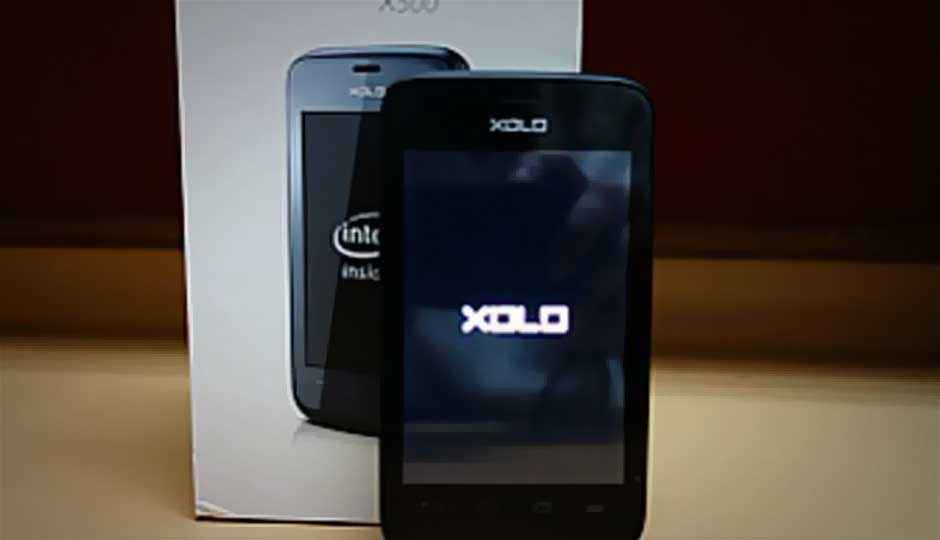
The Intel Atom Z2420 'Lexington'-based Lava Xolo X500 has made its way to our lab and after having spent some time with it, and running the gamut of benchmarks, here are our first impressions.
Qualcomm and Nvidia have made their presence felt with their Snapdragon and Tegra processors respectively in the smartphone market. Intel is one who has been late to enter the smartphone market. Better late than never, the first mobile in India to launch with an Intel processor was the Lava Xolo X900.
Launched in mid-2012, the Xolo X900 ran on Android 2.3.7 Gingerbread straight out of the box and had an Intel Atom Z2460 SoC chipset, featuring a ‘Saltwell’ 1.6GHz single-core CPU with Hyper-Threading, and the PowerVR SGX540 GPU (400MHz), coupled with 1GB of 32-bit dual channel LPDDR2 memory. It housed a 4.03-inch TFT LCD (1024 x 600 pixels) display and also showed off an 8MP camera with 1080p HD video. The device was quite the performer for the time when it was launched. You can read our review of the device here.
Today, we have with us a more affordable and entry-level Android device from Lava, the Xolo X500, which runs on the Intel Atom ‘Lexington’ Z2420 SoC chipset, and is priced at Rs. 8,999. The single-core processor is clocked at 1.2GHz and will come with Intel Hyper-Threading Technology (implying two threads, or logical cores). It will have 512MB of RAM. In terms of other specifications it has a 3.5-inch display with a 480×320 pixel resolution, 4GB of built-in storage expandable up to 32GB via a microSD card slot. It also houses a 1,500mAh battery and a 5MP rear camera.
Intel announced the ‘Lexington’ Atom Z2420 SoC chipset at CES 2013. It is capable of 1080p HD hardware-accelerated encoding/decoding, and supports up to two cameras delivering advanced imaging capabilities, including burst mode that allows people to capture seven pictures in less than a second in 5MP quality. The platform also includes the Intel XMM 6265 HSPA modem that offers dual-SIM/dual-standby capability for cost-conscious consumers. You can read the details of Intel’s announcements at CES here.
Design & Ergonomics:
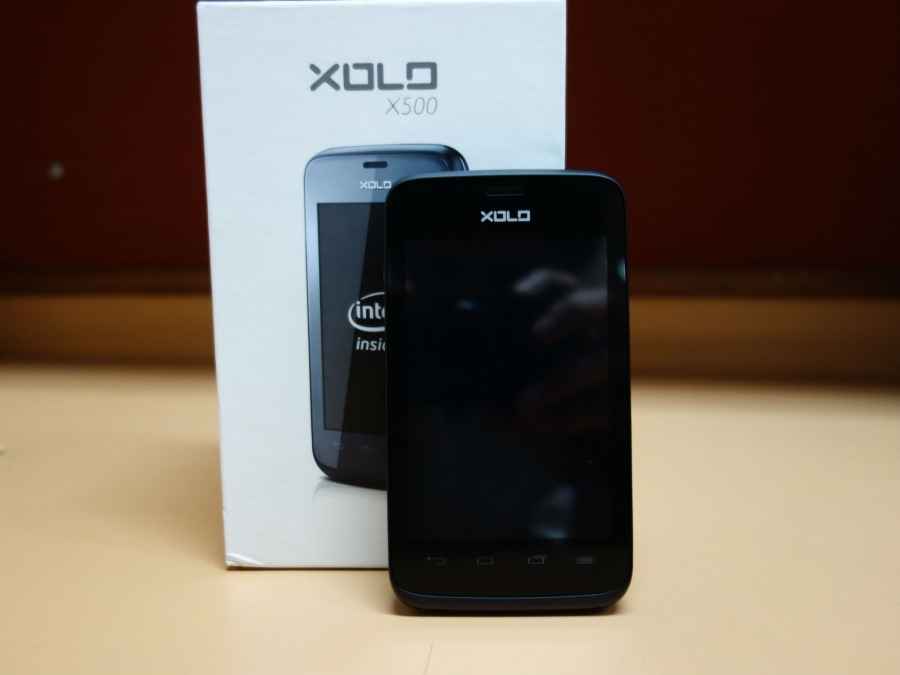 |
 |
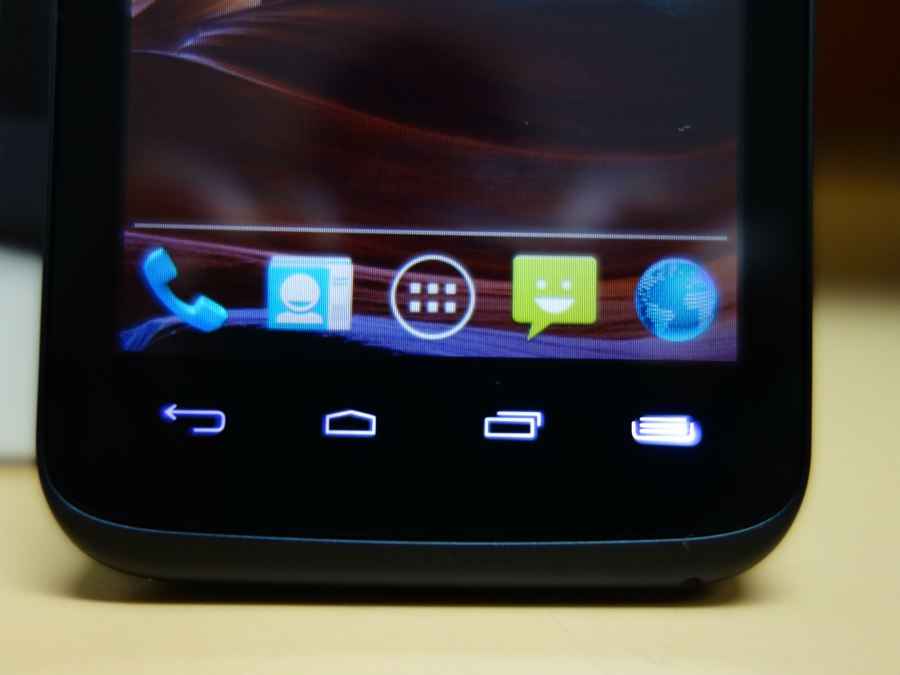 |
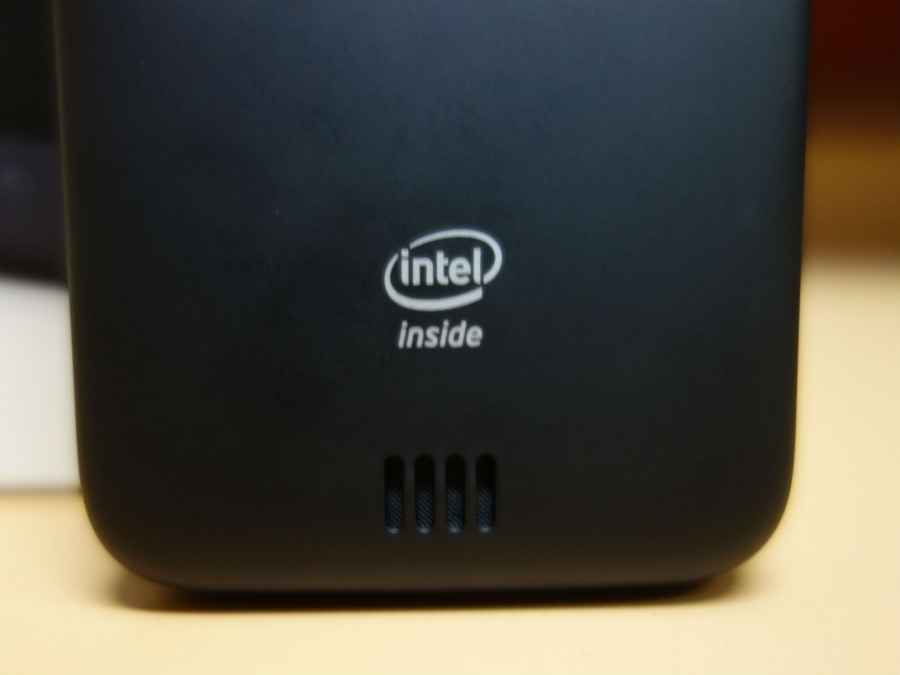 |
In terms of its looks, the Xolo X500 feels really small in our hands. In a day when even the budget devices are targeting screen sizes of 4.5-inches or higher, the Xolo X500 has a gone in for a smaller form factor. This makes the device good to work as a phone but may feel small and cramped with respect to multimedia performance. It has a back with a rubberized finish adding to the grip of the device.
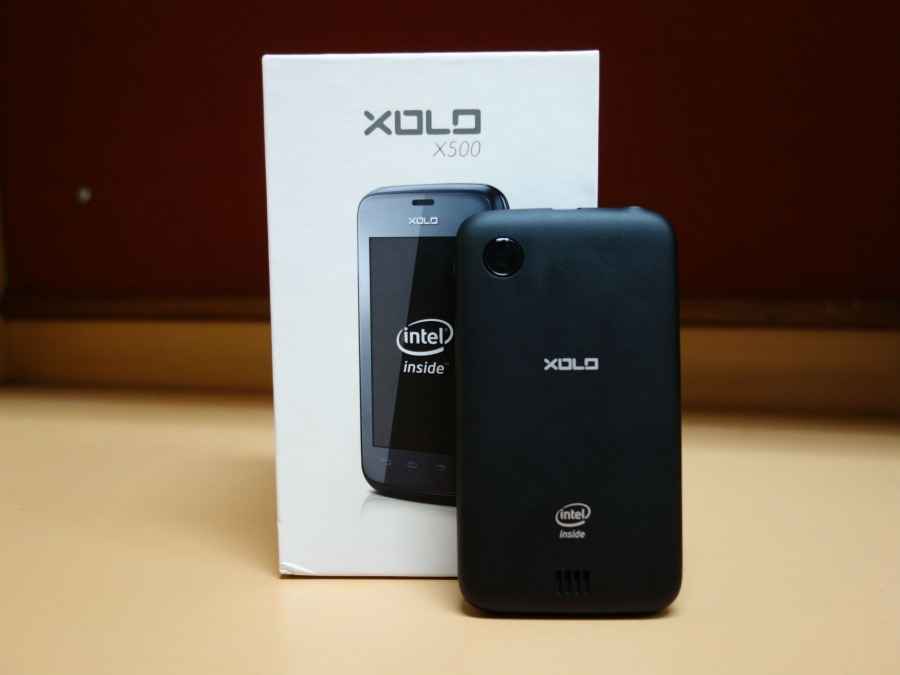 |
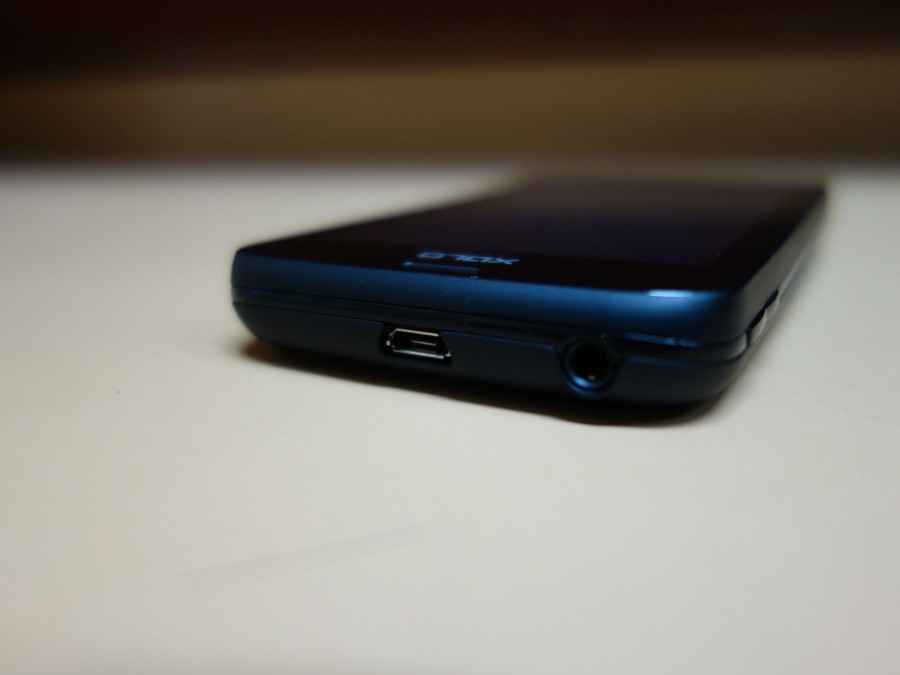 |
 |
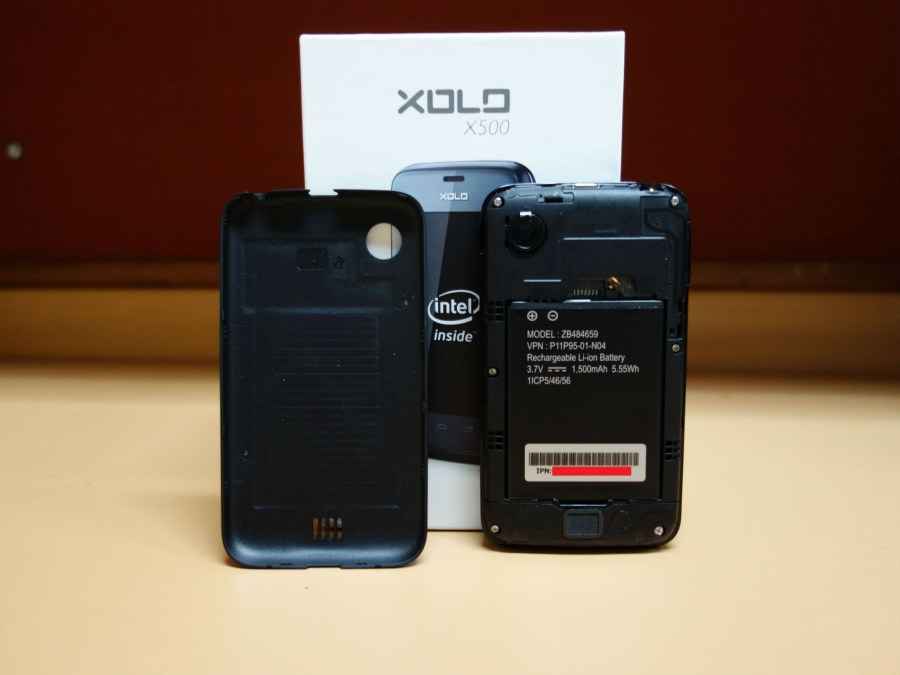 |
On the face, the Xolo X500 compromises on the front facing camera but has the standard four capacitive touch buttons – back, home, multitasking and menu. The left of the device has the volume rocker where as the right has the power button. The top has the headphones jack and the microUSB port.
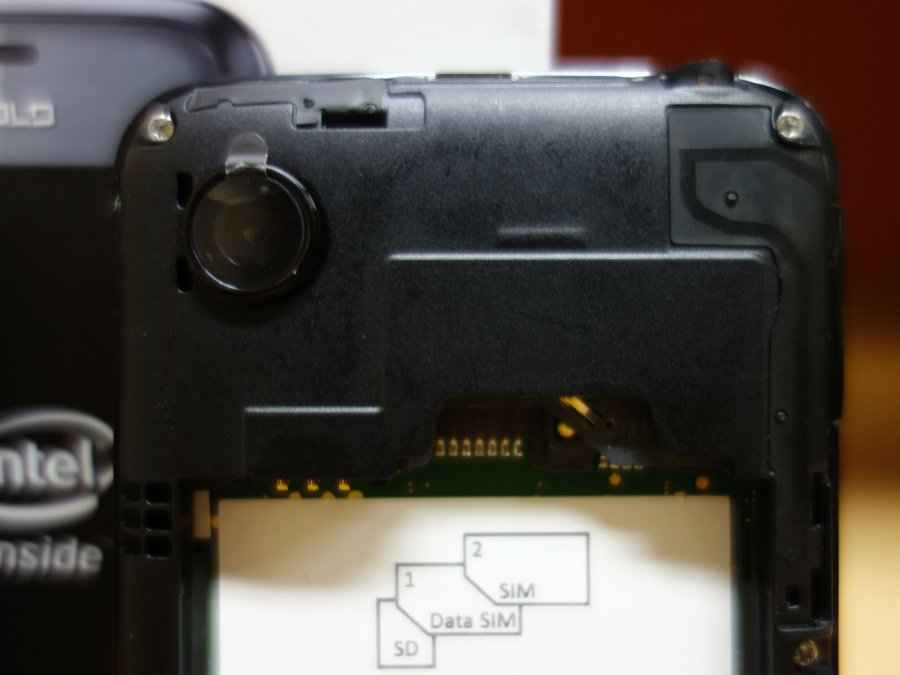 |
 |
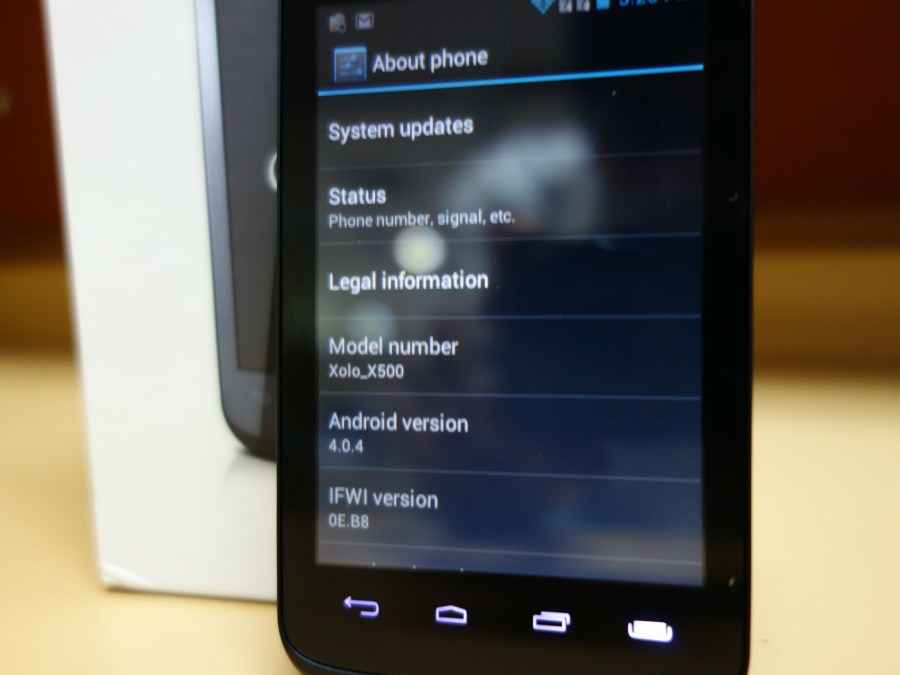 |
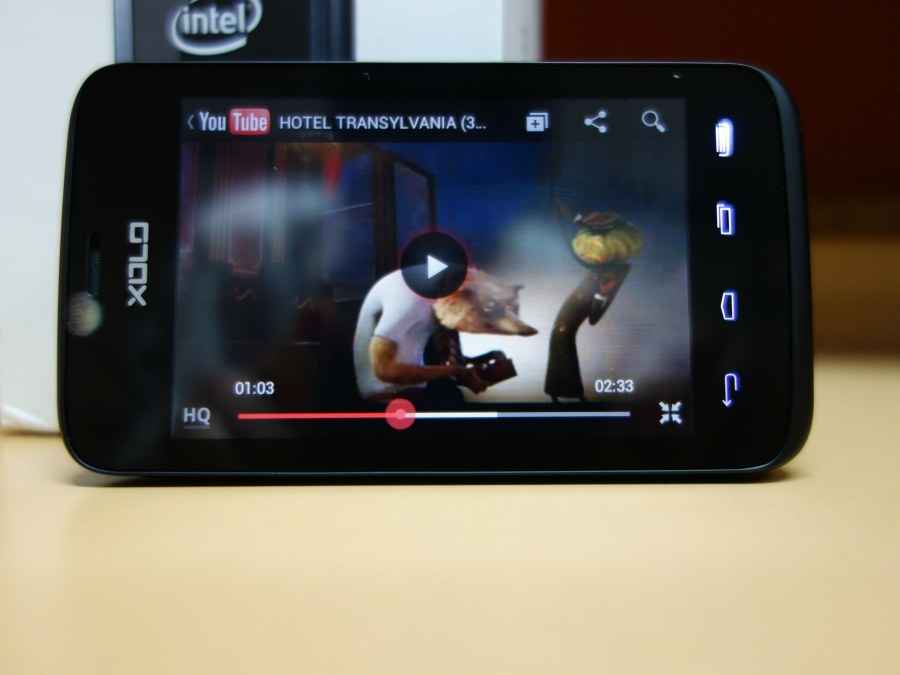 |
Benchmarks:
The first thing we did when we got the device was run a few benchmarks to see how the Xolo X500 performed when compared to the competing devices in the same price range. Below are the benchmark scores of the Intel-powered Lava Xolo X500 versus the Karbonn A21, Huawei Ascend G300, the Sony Xperia Tipo and the Micromax Canvas 2 A110.
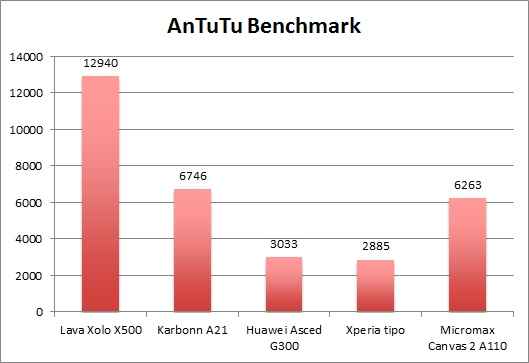 |
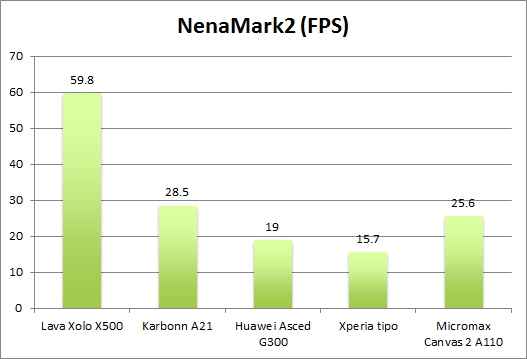 |
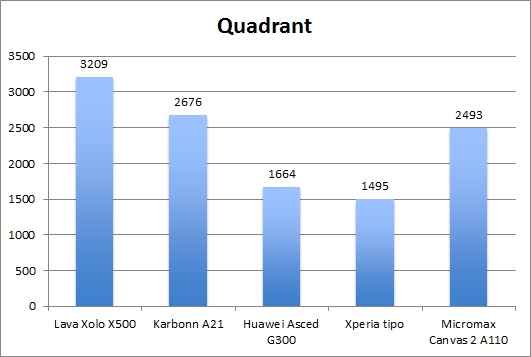 |
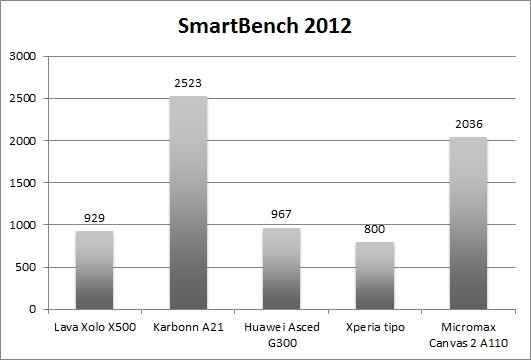 |
From the above comparison it is clear that except for the SmartBench 2012 benchmark, the Xolo X500 outperforms its peers in all the other benchmarks by a mile. In the SmartBench 2012 benchmark, the Karbonn A21 takes the cake, which roughly indicates the A21 is good for productivity as well as gaming. You can read our review of the Karbonn A21 here.
In other benchmarks – Quadrant and Antutu, the device outperformed not only the competition by a mile but gave us scores which we have seen on premium devices such as the Sony Xperia SL, HTC One X and the Samsung Galaxy Note II to name a few.
Since benchmarks represent the raw performance, it is quite clear that Intel has done well with the SoC, processor and the Hyper-Threading technology, and Lava with its optimization of the device.
Another benchmark that we ran on the device is GLBenchmark. This benchmark proves the graphical rendering capabilities of the smartphone. Put simply, the higher the score the better the game will run on your device. We compared the GLBenchmark score of the Xolo X500 with the HTC Desire SV. The HTC Desire SV has a 4.3-inch display with a 480×800 pixel resolution, Android 4.0.4 OS, dual-core 1GHz Cortex-A5 Qualcomm MSM8225 Snapdragon processor, Adreno 203 and 768MB of RAM. The HTC Desire SV is priced at Rs. 19,711. Below is the benchmark score.
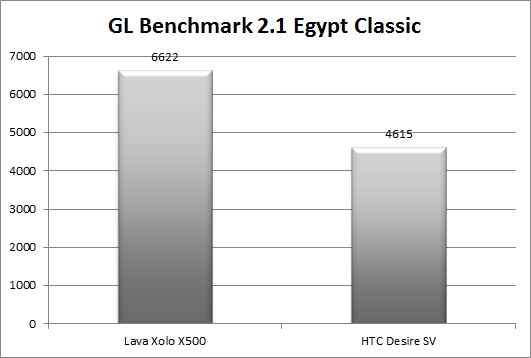 |
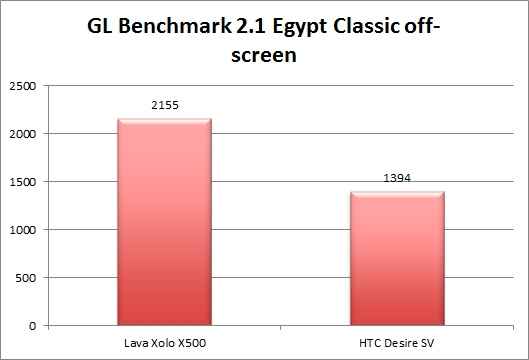 |
The GLBenchmark score for the Xolo X500 is really high. But that is also because the graphics need to be rendered for a smaller display with a lower resolution. We also have the off-screen score, which represents the graphical capabilities of the device without worrying about the resolution of the display. Which is to say that it pushes the hardware to its maximum potential. Here too, you can see that the Xolo X500 has outperformed the Desire SV.
From our above analysis one thing is clear – some real powerful things come in small packages and the Xolo X500 is definitely one of them. It has really outperformed other smartphones in the same price range as well as in the graphical comparison with the Desire SV. The display is vibrant and has good viewing angles but the audio though loud is extremely screechy at high volumes.
This is just our first impression of the device. Stay tuned, as we will bring you are in-depth review of the device soon.
Sameer Mitha
Sameer Mitha lives for gaming and technology is his muse. When he isn’t busy playing with gadgets or video games he delves into the world of fantasy novels. View Full Profile




